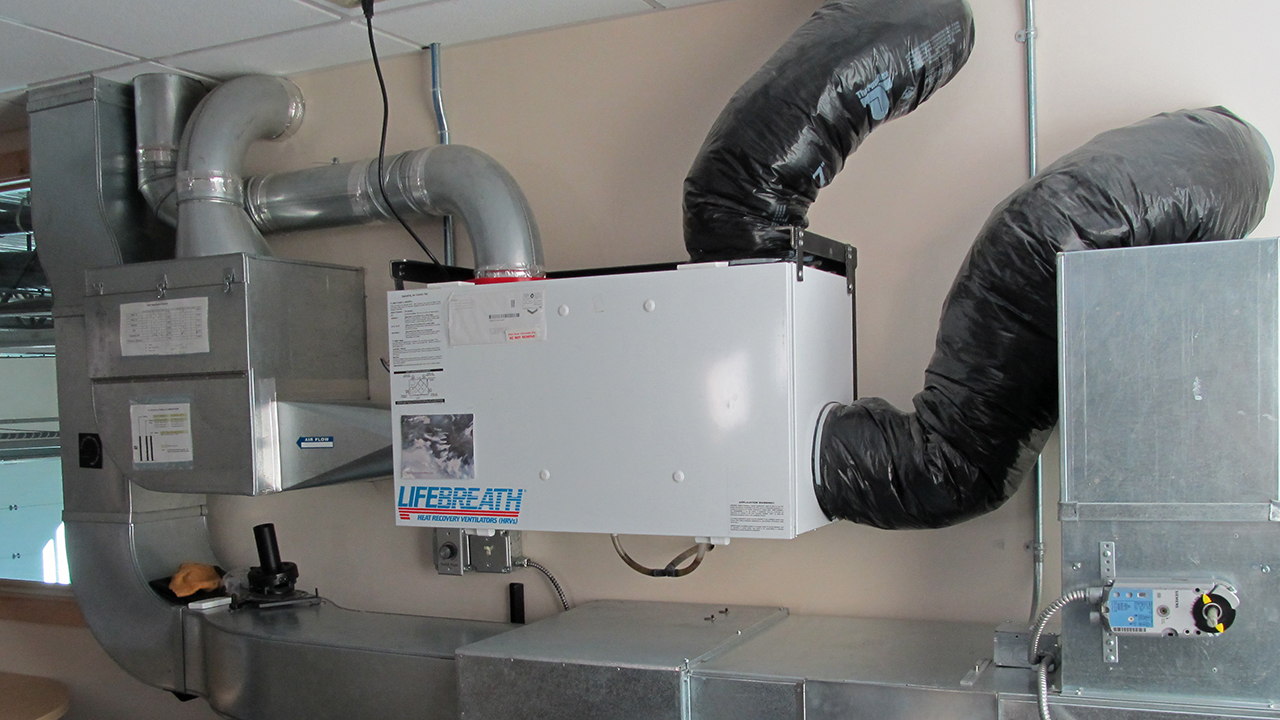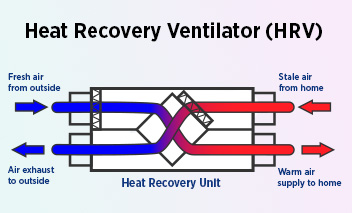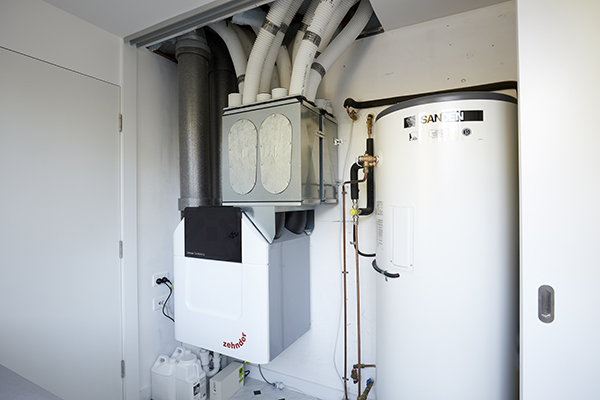The All-Inclusive Overview to the Uses of Heat Recovery Ventilation in Modern Buildings
Heat Recovery Ventilation (HRV) systems stand for a considerable advancement in constructing innovation (HRV Heat Recovery Ventilation). They give an approach for exchanging stagnant indoor air with fresh outside air while minimizing power loss. This approach not just enhances indoor air top quality but additionally contributes to power efficiency in both property and commercial buildings. Understanding the numerous applications and benefits of HRV can disclose its vital role in contemporary layout and sustainability efforts. The ramifications of this technology are worth discovering further
Understanding Heat Recovery Ventilation Equipments

Although lots of modern-day buildings prioritize power efficiency, comprehending warmth recovery air flow (HRV) systems is crucial for optimizing indoor air top quality and minimizing power intake. HRV systems work by moving heat from stale indoor air to inbound fresh air, efficiently keeping comfortable interior temperatures while lessening power loss. These systems consist of a warmth exchanger, followers, and ductwork that assist in the circulation of air. Throughout winter season, HRV units catch and reuse warmth from the outward bound air, while in summer season, they can aid cool down incoming air. By continually trading air, HRV systems additionally lower moisture and the focus of indoor pollutants. Correct setup and maintenance of HRV systems are important for their effectiveness and efficiency in enhancing overall structure efficiency and comfort.
Advantages of Heat Recovery Ventilation
Heat recovery ventilation systems supply many benefits that enhance both power effectiveness and indoor air top quality in contemporary buildings. By recording and recycling energy from exhaust air, these systems significantly reduce home heating and air conditioning expenses, resulting in reduced power consumption. They keep a stable flow of fresh exterior air, lessening the risk of indoor air pollutants and allergens. This constant exchange assists regulate humidity levels, protecting against mold development and guaranteeing a much healthier living environment. In addition, HRV systems contribute to sustainability objectives by decreasing total carbon footprints. Their ability to maximize ventilation without giving up thermal comfort makes them an important addition to contemporary structure style, advertising both economic and eco-friendly benefits.
Applications of HRV in Residential Structures
As property owners significantly focus on energy performance and indoor air high quality, the applications of warm recuperation ventilation (HRV) systems in domestic structures have actually become much more prevalent. HRV systems are specifically useful in tightly secured homes, where preserving fresh air flow is vital for preventing wetness build-up and indoor contaminants. They effectively transfer warm from outbound stagnant air to incoming fresh air, decreasing power costs related to heating and cooling. Furthermore, HRVs can enhance comfort address degrees by regulating moisture and temperature level. They are additionally adaptable for different residential designs, consisting of single-family homes and multi-unit structures. On the whole, incorporating HRV systems supports sustainable living methods while making certain a much healthier indoor environment for residents.
HRV in Industrial and Industrial Settings
In business and commercial settings, the implementation of warmth healing ventilation (HRV) systems has become significantly important for optimizing power efficiency and keeping air quality. These systems efficiently transfer warmth from exhaust air to inbound fresh air, lowering the demand for added home heating or cooling. This not only decreases power prices yet likewise adds to sustainability efforts. Industries such as manufacturing, warehousing, and office complex profit considerably from HRV systems, as they help control temperature level and humidity degrees, ensuring a comfortable and productive setting. HRV systems aid in eliminating impurities and excess moisture, boosting interior air quality. As laws around air top quality end up being more stringent, the fostering of HRV technology is most likely to grow, making it a vital element of contemporary commercial and industrial framework.
Future Patterns in Heat Recovery Ventilation Innovation

Frequently Asked Concerns
How Does Heat Recovery Ventilation Impact Indoor Air Quality?
Heat recovery ventilation significantly improves indoor air quality by constantly exchanging stale indoor air with fresh exterior air while recouping energy. This process reduces toxins, keeps investigate this site suitable moisture degrees, and assures a healthier atmosphere for passengers.
Can HRV Solutions Be Installed in Existing Buildings?
HRV systems can certainly be installed in existing structures. Retrofitting may need modifications to ductwork and air flow designs, however it substantially enhances power performance and interior air top quality, making it a sensible alternative for older structures.
What Maintenance Is Needed for HRV Systems?

Are There Certain Climates Where HRV Is A Lot More Efficient?
Heat recovery ventilation systems are specifically efficient in environments with significant temperature distinctions in between periods. These systems maximize power efficiency by recouping heat from exhaust air, making them suitable for both chilly and moderately warm atmospheres.
Exactly How Do HRV Solutions Affect Energy Costs?
